Jazz Appreciation Month
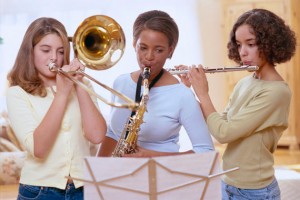 Main Line School of Music and Dance celebrated National Jazz Appreciation Month by putting together a list of the Top 10 Jazz Artists of All Time.
Main Line School of Music and Dance celebrated National Jazz Appreciation Month by putting together a list of the Top 10 Jazz Artists of All Time.
In collaboration with the team over at Jazz 88.3FM in San Diego, we have put together a playlist on YouTube, where you can check out our favorite jazz artists today, Jazz Appreciation Day!
Good Practices for In Home Music Lessons
In-home music lessons can be a wonderful thing for families. You are in the comfort of own home in a familiar surrounding, and able to use all your own instruments and equipment for the lesson. It is convenient to not have to deal with traffic and parking or finding childcare. In-home music lessons are perfect for families with a very busy schedule and/or young children in the household and also tend to create a closer bond between the teacher, parent and student. Your home is naturally nurturing, and the teacher starts to feel like a family member after a while. Also, lessons in the home can inspire siblings, friends or even parents to decide to sign up for music lessons. However, with an in-home lesson, the environment must be chosen and set up carefully, and it is easy to fall into bad habits due to the relaxed nature of being in your own home. Below are a few tips and practices for parents of in-home students to help create a focused and productive learning environment.
- Find a place and time for the lesson where there will be no distractions. Although it may be helpful for parents to sit in on part of the lesson for younger students, it can be distracting to have parents and siblings present for the lesson or be in a space where others can be seen or heard nearby. The student’s comfort level is the highest priority and he or she should not feel on display during the lesson. Find a room with privacy and without distracting background noise.
- If possible, create a special area that is designated the music room. All of the music equipment, books and notebooks can be kept in this room and this is where the student will have lessons and as well as practice time. This room should be kept clean and orderly.
- The temperature should be comfortable – if it is too hot or too cold in the room, this will impact both the physical ability of the student to play and the student’s ability to concentrate. It may also have an effect on the sound of the instrument itself.
- If a student is hungry, he or she will have more difficulty focusing on the lesson, so make sure that the student has eaten or had a snack before the lesson.
- Certain types of refreshments may assist in the ease of playing for specific instruments. For a voice student, a cup of lemon or mint tea or a glass of water is helpful, and for brass or woodwinds students it may be a good idea to have lollipops or hard candy available. Due to the physical demands of drumming, a drum student should have a glass of water, Gatorade or other thirst-quenching beverage available.
- Make the teacher feel comfortable in your home with a warm greeting and offer of a drink or place to sit.
- Be ready for the lesson. Since you are in your own home, you may be more relaxed about being on time and prepared for the lesson than if you are going to a music school for the lesson. Respect the teacher’s time by making sure you are home, have all your books and equipment together, have eaten and prepared the space for the lesson before the arrival of the teacher.
- A parent should be home for the lesson if possible. The teacher will often have updates for you about what the student is working on, or questions about what to work on for the future. If a babysitter or other adult is home with the child instead of you, have them take notes so you have an idea of what the student is working on and can assist with it during practice time. Also, keep in mind that the teacher, although most likely responsible and good with children, was not hired as a babysitter so may be uncomfortable if left alone with the student.
- Most importantly, have fun and enjoy this very special relationship.
New at Main Line School – Makin’ Music Rockin’ Rhythms
 Research has shown that being exposed to music at a young age can help with the development of verbal, math, and motor skills, as well as inspire creativity, build social skills and promote emotional development. The earlier children are exposed to music, the easier it will be for them to learn to learn and express themselves through music as they grow older, and it will foster a love of music that will last throughout their entire lifetime. For these reasons, Main Line School of Music and Dance has decided to partner with Makin’ Music Rockin’ Rhythms, a program that provides an entry into musical education for children not yet ready for private music lessons.
Research has shown that being exposed to music at a young age can help with the development of verbal, math, and motor skills, as well as inspire creativity, build social skills and promote emotional development. The earlier children are exposed to music, the easier it will be for them to learn to learn and express themselves through music as they grow older, and it will foster a love of music that will last throughout their entire lifetime. For these reasons, Main Line School of Music and Dance has decided to partner with Makin’ Music Rockin’ Rhythms, a program that provides an entry into musical education for children not yet ready for private music lessons.
The Makin’ Music Rockin’ Rhythms program provides a playful and interactive classroom environment for children (from newborns to age 5) with activities designed to keep students actively engaged. Students will have the opportunity to sing and chant along with live and recorded music. An assortment of musical instruments, such as hand drums, rhythm sticks, and shaker eggs are distributed in class for the students to play along.
Movement activities and dance are also incorporated to enhance the experience, as well as the use of other exciting props such as hoops, twirling umbrellas, or scarves. Makin’ Music teachers are educated in music and experienced working with children. The program also offers a variety of recorded music to be played in class. The CD’s are recorded and produced in-house with the aim of exposing students to a range of genres including folk, rock, jazz, country and world music. The CD’s feature traditional children’s songs, as well as original material, and can be purchased so children can listen and practice what they’ve learned at home.
Makin’ Music Rockin’ Rhythms is a family-friendly environment and parents are invited into the classroom to share in the experience. In this way, children of all ages are allowed to participate. The family setting encourages siblings of different ages to attend class together and also has the benefit of starting a family tradition of listening to and creating music together. The teachers individualize each session to meet the needs of the students, and work with parents to create a safe environment for children to express their own personal creativity.
Makin’ Music has 16 locations and has won 11 National Awards, including Nickelodeon’s Parents’ Pick Award for Best Music Classes, Main Line Today’s Best of the Main Line and Philadelphia Magazine’s Best of Philly awards. Main Line School of Music and Dance is honored to be a part of its programming and excited to be able to offer this to our students in the Main Line and Delaware County areas.
For more information about Makin’ Music Rockin’ Rhythms program, please visit the Makin’ Music Website.
For class schedules, pricing and information about the Main Line Makin’ Music program, please visit Main Line Makin’ Music Program.
Three Inspiring Local Music Charities
In Philadelphia, many children live below the federal poverty line, and the arts program has been cut in some Philadelphia schools due to lack of funding. Below is a list of three local music-based charitable organizations that have made real differences in the local and national communities. Two of these organizations provide children with the resources they need to be able to learn and play musical instruments. The third organization is a demonstration of the healing power of music and an opportunity for musicians to make a positive change in the lives of people who have been affected by illness.
Along with an overview of the mission and accomplishments of these organizations, information is provided on how you can get involved in making the world a richer and more musical place. Have a musical instrument or CD you’re not using any more? Donate it. Interested in a teaching, performing or volunteer opportunity? Get involved. Organizing an event? Partner up with one of these organizations to make it a benefit.
- Musicopia is a music-based nonprofit organization that provides assistance in musical education and performance opportunities in areas where arts and music programs are cancelled in public schools. Their programs inspire a love of and knowledge of great music, appreciation for cultural diversity and the value of musical discipline. Musicopia partners with many public schools in the area and puts together workshops, assemblies, residencies and in-school concerts. They build communities where the students have the opportunity to learn to play the musical instrument they are interested in. Their programs, such as the Musicopia String Quartet or Drum Line, are set up to benefit Philadelphia’s underserved communities.
- Get Involved! There are many ways to get involved; recently a local salon (Blue Hair Salon) offered a promotion for free haircuts for musicians while raising money for Musicopia. Musicopia is seeking musical instruments, as well as monetary donations, so if you have an instrument you are not using, get in touch.
- Play On, Philly uses music education to bring about social change. They seek to enrich to lives of Philadelphia children by providing high quality daily music education to children who may otherwise not receive it. The organization was started in 2011 at the Saint Frances de Sales School in West Philadelphia and has been steadily expanding ever since. This is an intense program that requires at least 2 hours of study each weekday. Some of the programs offered include group orchestral instruction, private musical instruction, vocal coaching and chorus practice, trips to musical events and exposure to world-renowned ensembles and artists. Play On, Philly attempts to accept as many students as possible into the program. Every student enrolled received a full scholarship, which covers the cost of instruction as well as all instruments and supplies. Auditions are not required to be accepted into the program. They focus on ensemble playing together, and offer many extraordinary performance opportunities at venues, including the Kimmel Center, Please Touch Museum, and World Café Live.
- Get Involved! Play On, Philly is always seeking donations of musical instruments or monetary value. They also offer paid teaching positions, internships and volunteer opportunities.
- Studies have shown that live music can reduce the anxiety and stress level of hospital patients. Musicians on Call is a program organized through local University of Pennsylvania radio station WXPN, whose mission is to bring back the joy and hope that can often fade away in hospital situations. They bring live and recorded music to the bedsides of patients in hospitals and other healthcare facilities in Pennsylvania, New York, and many other states. Their programs include the Bedside Music Program, which brings live, in-room performances to patients undergoing treatment. All of the participating musicians volunteer their time. Other programs offered are the Music Pharmacy, which provides hospital patients with CD libraries and players, and the Project Playback program, which offers patients special software to compose, record, and produce their own music, as well as professional volunteers to provide guidance in writing and recording.
- Get Involved! Musicians on Call is always seeking volunteers. If you are a musician you can apply to be a performer, and they also seek volunteer guides who escort the musicians and act as a liaison. They are seeking CD donations to add to their Music Pharmacy collection, and there are a number of ways to donate financially, such as sponsoring a hospital room or purchasing Musicians on Call merchandise. Ask your employer about donations, as many companies will offer matching gifts for donations to Musicians on Call.
A Short History Of Pointe
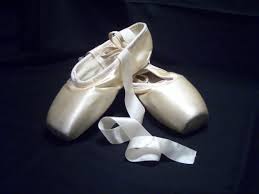 The history of the Pointe style of dance is intertwined with the history and development of the pointe dance shoe and the evolution of ballet as an art form.
The history of the Pointe style of dance is intertwined with the history and development of the pointe dance shoe and the evolution of ballet as an art form.
Ballet was originally developed in the courts of France and Italy during the 16th and 17th century. Dancers would use costuming and movement to tell stories and create scenarios. At first, the performers were only men wearing wigs and tights. In France in the 1600s, women began to study and perform ballet. They wore heavy skirts and heels, which impeded them from attaining the same flexibility or movement as the men.
In the mid 18th century, Maria Tagliona of the Paris Opera Ballet became the first dancer to wear a non-heeled shoe, which enabled her to perform leaps that would not be possible using the traditional heeled shoe. Around the time of the French Revolution, dancers began to wear flat shoes secured with ribbons with pleats on the toes, which made leaps and turns easier.
Throughout the history of ballet, there has been an effort to make the dancers appear lighter, more mystical, and ethereal. In the late 18th Century, the first dancers rose on their toes using an invention of Charles Didelot called a “Flying Machine”, which used wires to lift the ballerinas, making them appear to fly as they leaped. This move was well-received by audiences, and the term “pointe” was used to describe the choreography. Many choreographers began to work on ways to incorporate pointe dancing into their routines without the use of wires.
In the 19th century, Marie Taglioni became the first dancer to dance “en pointe” in her performance of La Sylphide. Her shoes were modified ballet slippers without any real support. The soles were leather with reinforced sides and toes to help the shoes hold their shape. They only allowed her to rise briefly to pointe.
The next incarnation of the pointe shoe occurred in Italy during the 19th century. Dancers such as Perina Legnani would wear shoes with a sturdy, flat platform at the front of the shoe, rather than the pointed end that was previously used. They also included layers of fabric to encase the toes, and a stronger sole. It was at this point that dancers started being asked to do more work en pointe
The modern pointe shoe is often attributed to the influential Russian ballerina Anna Pavlova. She had high arches and slender, tapered feet, which made her more vulnerable to injury while dancing en pointe. To compensate for this, she inserted toughened leather soles into her shoes and created a more stable box for the toe area by flattening and hardening the area containing the toes. This made it easier for her to dance en pointe, but was originally perceived by her colleagues as “cheating”.
Today’s pointe shoes are made of several layers of burlap and canvas, dipped in glue for stiffness, with a final layer of satin. The shoe is held together by three layers of leather and cardboard, called shanks, which are nailed and glued together. They lengthen the line of the leg, build strength in the ankles, feet and toes, and allow dancers to jump higher, sustain poses, and spend more time en point than what was previously possible with the earlier versions of pointe shoes.
For students interested in starting a study of pointe, Main Line School of Dance is now offering an introductory pointe program by teacher referral. Contact us today for more information.
Tips For Purchasing Your First Drum Kit
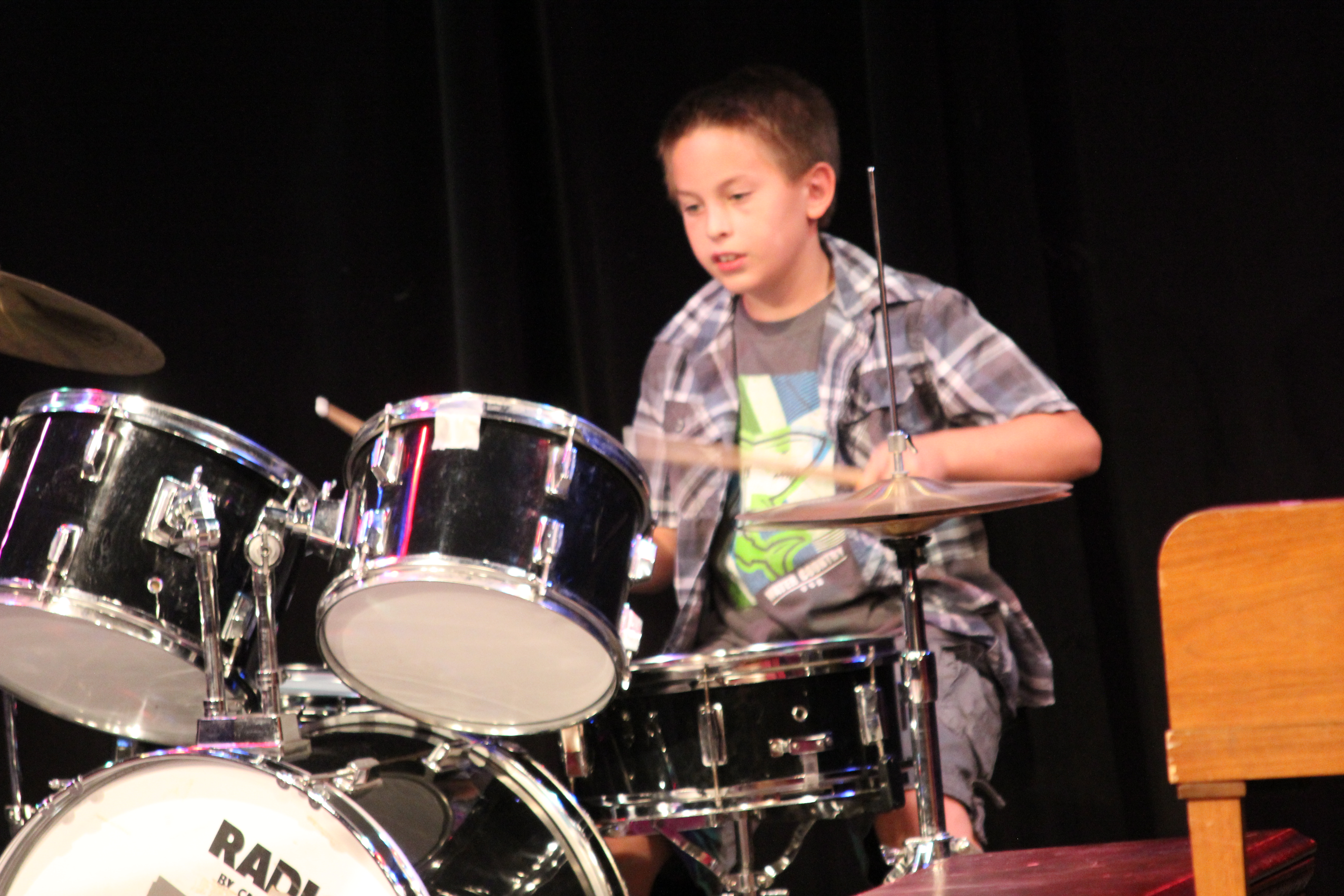 Thinking about purchasing a drum kit for a new student? Here are some quick tips that will help you in your search.
Thinking about purchasing a drum kit for a new student? Here are some quick tips that will help you in your search.
Think Before Purchasing – Keep in mind that even a beginner drum kit is an investment. Besides being expensive, a drum kit is noisy and very large. You do not need to rush into the purchase, since you will not need a full drum kit to start lessons; a pair of sticks and practice pad can be used by beginner drum students for home practice. If this is for a child, it may be best to wait until you confirm his or her interest level before making a large investment in a full kit. Try setting a goal for your child, and if they reach that goal they can get a full kit.
Consider Used Kits – Many professionals recommend purchasing a used drum kit. Browse Craigslist, where used musical instruments are often posted from people in the area. Music stores and music schools may also have notices up of people selling used drum kits. Another option is to look at Pawn shops or small local music supply stores. E-bay is also an option. Try to stick with someone selling locally, and ask to inspect the kit before purchasing. If a drum kit has been treated well, only the drum heads will show wear or be affected by the age of the kit. These are easily replaceable, and should be replaced from time to time anyway. Generally, if you do a little research and inspect the kit before purchasing, you will get better value for your money buying a used kit. If you can, bring an experienced drummer with you who can help you inspect the kit and tell you whether it has a good sound.
- Inspect the kit – To inspect a used drum kit, you do not need to be an expert on drums. Your goal is to make sure that nothing is missing and that the general state of the equipment is good.
- All equipment is present – Make sure the top and bottom drum heads are present, and that none of the tuning lugs or other hardware is missing. Check to make sure none of the screws in the hardware are missing.
- Check the wooden shells -Make sure the wooden shells are not chipped or dented or misshapen. Confirm that finish on the shells is in good condition. Do not purchase a used kit with a damaged shell.
- Check the hardware – Check the metal rims that hold the heads on the drums as well as the cymbal stands, throne and bass drum pedal. Make sure all hardware is strong and not dented. The metal equipment should not be rusty or pitted; it should be clean and shiny.
- Check the bearing edges – This is the area at the top of the drum shell where it meets the drum head, and the quality of the bearing edges determines a lot about the sound of the drum. If the drum heads are clear, you can take a look, but it is recommended to take off the drum head and inspect visually and by running your hand over the rim of the bearing edge to make sure there are no chips or dents. Any damage to the bearing edges will have a large impact on the sound of the drums.
Buying New – If you are buying a new drum kit, go with a store specializing in musical instruments. Avoid purchasing drums in a store such as Wal-Mart or Target. Often, the professionals at music stores are helpful and informative, but they may try to up-sell you on features that are not necessary. For that reason, bring an experienced drummer or musician with you who will know what is necessary and what is excessive.
Play It – Whether you are purchasing new or used, it is important to play the drums. Even if you are not an experienced drummer, you will get a feel for the kit. Trust your instincts: if it doesn’t feel or sound right to you, it may not be the right kit for you.
Price – A good purchase price for a starter drum kit can range from $300-$800. You can purchase a decent used drum kit for around $300-$500 and a decent new budget/starter drum kit will run about $500-$1000.
Look for a Quality Brand – Whether you are purchasing a new or used kit, it is recommended to look for a respected brand and stay away from “off brands”. Name brands will ensure the reliability and resale value of the kit. Brands to look for include DW, Pearl, Tama, Yamaha, Gretsch, Mapex, Sonor and Ludwig. These brands will often have higher-priced, more professional sets as well as budget starter kits for beginner drummers. Brands to stay away from if possible include Percussion Plus, Sunlite, Thor, TKO and Maxwin.
Necessary Pieces – The most standard configuration is a 5 piece drum kit with a bass drum, snare drum, floor tom, and 2 hanging toms. Cymbals for a starter kit should include a pair of hi-hats mounted on a stand with a foot pedal, and one crash/ride cymbal. Most cymbals included in a kit costing less than $500 will be low-grade and easily dented. Hardware should include tom holders for the mounted toms, cymbal stands, snare stands, bass drum pedal and a throne.
Junior Size or Full? – With the exception of students age 6 and younger, it is generally recommended to start with a full drum kit, as this is what they will be using for the lessons. Talk with your child’s teacher about adjustments that can be made to make the kit easier to play for a younger student.
Noise Concerns – A drum kit at your home can be noisy and disruptive. If you are concerned about the noise, you may want to consider purchasing an electronic drum kit. Be advised that most drummers and drum teachers agree that there is nothing like the experience of playing an acoustic drum kit. A second option is to purchase muting pads to place on top of the drums. Main Line School uses this option and it keeps everything very quiet at the school. You will always have the ability to take them off and enjoy playing at full volume whenever you please.
Plan to Upgrade – The great thing about a drum kit is that many of the parts can be upgraded and swapped out for better parts, so as you assess the dedication and interest level of the student, you can plan to upgrade the kit as you go along. Your first upgrade should probably be a new set of drum heads. If your drum kit was used, the heads were most likely worn, and if the kit was purchased new the heads were probably cheap and factory-produced. New drum heads will dramatically improve the sound of the drum. High quality cymbals are also an excellent, if pricy, upgrade. The best cymbals will easily cost the same as the entire starter kit, but students can start with an upgrade to beginner cymbal packs from brands such as Wuhan, Sabian BB, Zildjian ZBT, which are still a considerable upgrade from the cymbals that come with a starter drum kit. You can also add accessories such as tambourine, cowbell, chimes, etc.
Five Famous Music Teachers
For hundreds of years, teaching music has been a respected and influential career. Musicians who studied and taught music went on to have amazing careers in the industry. These people spent their lives inspiring and shaping the next generation of accomplished performing artists. Here are five of the most famous musicians from the 19th to the 21st century.

Natalie Gauci (Born 1981) – Singer Natalie Gauci’s rise to fame began after she won the 5th season of Australian Idol, leading to a chart-topping musical career. Prior to her Idol appearance, she worked as a high school and college voice teacher, as well as a session musician to fund her original work. Natalie has released two studio albums and has been featured in a number of Australian chart-topping hits.
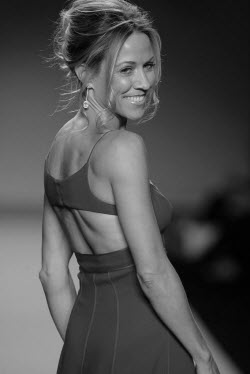
Sheryl Crow (Born 1962) – Grammy winning singer-songwriter and actress Sheryl Crow received her degree in music composition, performance, and education. She taught elementary school music, which gave her the flexibility to play in bands on weekends until she had her musical breakthrough writing advertising jingles and touring as a backing vocalist to Michael Jackson. Crow debut her first album in 1993 and has since released 8 more albums.
Roberta Flack (Born 1939) – Roberta was admitted to Howard University on a full scholarship 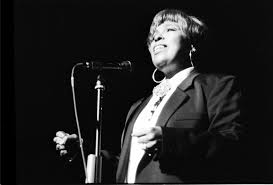 at age 15, the youngest student ever to enroll there. After graduating, she taught music at two junior high schools as well as private piano lessons, while providing piano accompaniment to blues singers on weekends. In between sets, she would play her own repertoire of blues and folk standards, accompanying herself on piano. Once she established herself in the jazz, folk and R&B recording realms, Flack became known for her hits The First Time I Ever Saw Your Face and Killing Me Softy. These songs won her the Grammy Award for Record of the Year 2 consecutive years (1973-74), a distinction she shares only with U2.
at age 15, the youngest student ever to enroll there. After graduating, she taught music at two junior high schools as well as private piano lessons, while providing piano accompaniment to blues singers on weekends. In between sets, she would play her own repertoire of blues and folk standards, accompanying herself on piano. Once she established herself in the jazz, folk and R&B recording realms, Flack became known for her hits The First Time I Ever Saw Your Face and Killing Me Softy. These songs won her the Grammy Award for Record of the Year 2 consecutive years (1973-74), a distinction she shares only with U2.
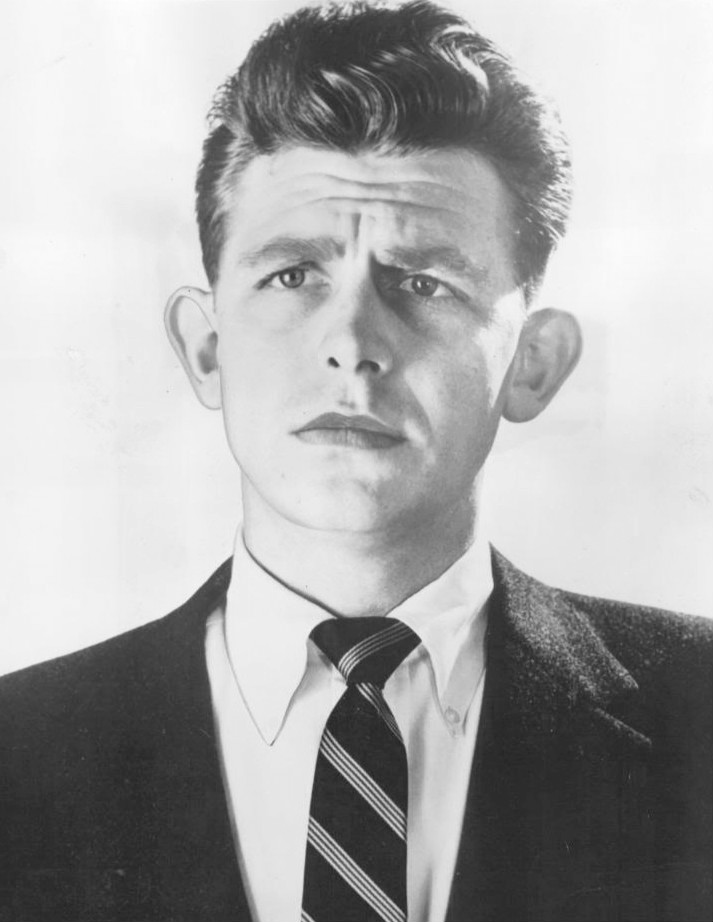
Andy Griffith (1926 – 2012) – Television and film star Andy Griffith, most famous for his roles as the title characters in The Andy Griffith Show and Matlock, began his college career studying to be a Moravian preacher, then changed his major to music and graduated with a degree in music education. He taught high school music and drama in North Carolina, where NPR radio personality Carl Kasell was one of his students. Andy Griffith’s love of music extended throughout his career, and he sang in many of his roles. Griffith also recorded albums of country and gospel music, as well as Christian hymn albums.
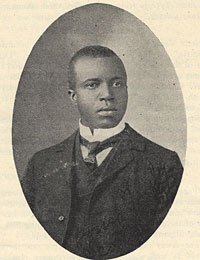
Scott Joplin (1867 – 1917) – Pianist and ragtime composer Scott Joplin, given the title The King of Ragtime, had a brief but productive musical career. He wrote 44 ragtime pieces, one ragtime opera entitled Treemonisha, as well as a ragtime ballet. When not performing or touring, he taught local young musicians in his hometown, including Scott Hayden and Arthur Marshall, who he later collaborated with. His most influential hit was the Maple Leaf Rag, a ragtime piece considered to be the first and archetypal ragtime hit.
Tips for Beginner Vocalists
If you are starting vocal lessons or a vocal practice, here are some quick tips to send you on your way to success.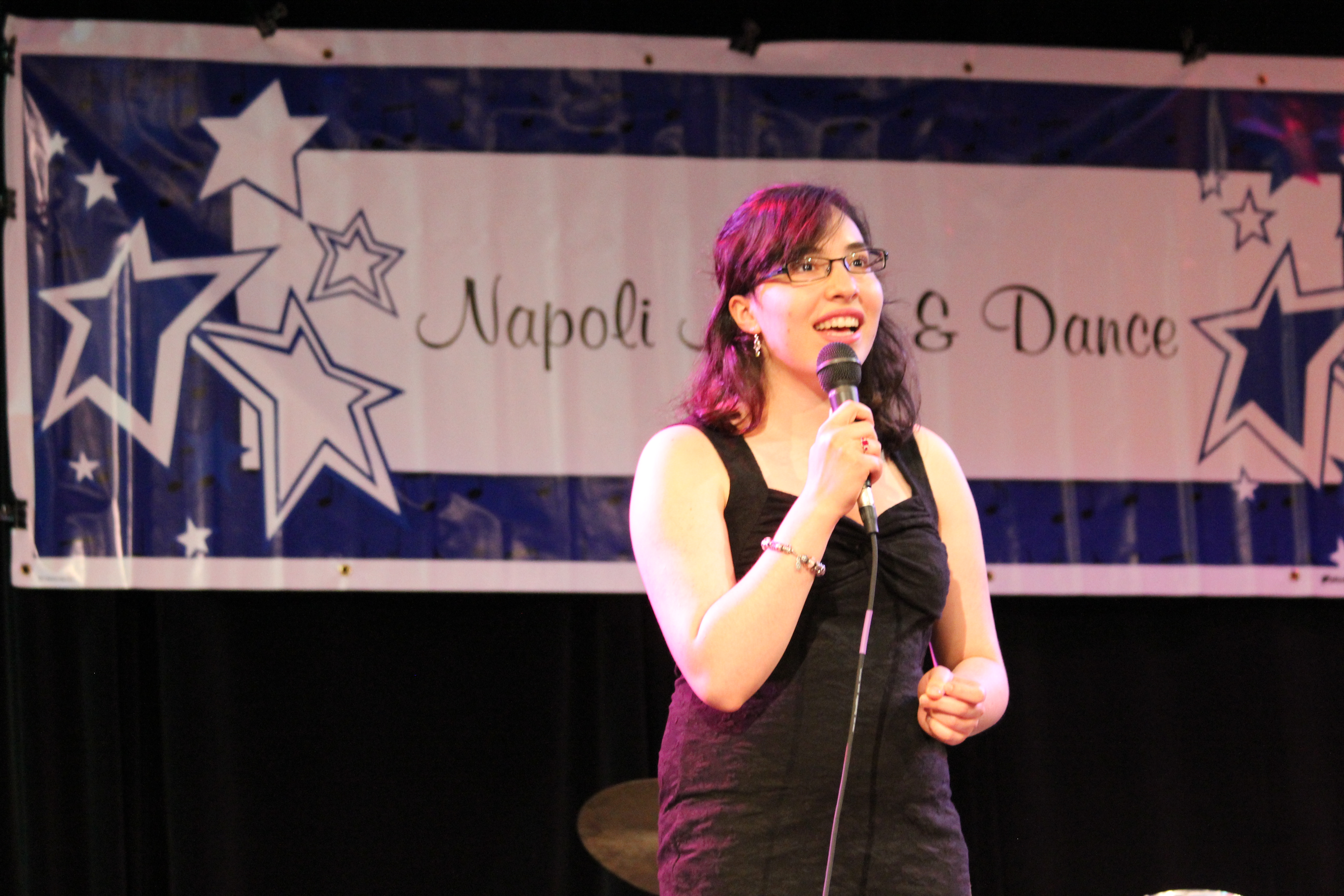
- Find a good vocal coach. Once you find a vocal coach you are interested in working with, take some time to check out their background or talk with some of their students. It may be possible to hurt your voice if you are taught incorrect vocal methods, which is why an experienced and qualified vocal coach is extremely important. One-on-one vocal coaching will help you to progress quickly and fix any mistakes before they become habits. Singing should never hurt or strain your voice. A good vocal coach will teach you to sing in a way that feels freer and easier than you may have imagined.
- Don’t be afraid to make mistakes. Every accomplished singer or musician has been through years of practice and failure before reaching any level of success. In singing, as you begin to expand your range and connect your high and low registers, your voice may croak or wobble at first, but this is perfectly normal. Trust that your teacher knows how to bring out your voice, and practice the methods taught to achieve full vocal potential.
- Make a habit of warm-ups and singing exercises. Vocal warm-ups, such as lip trills, keep your voice and throat healthy and help to relax the muscles in your face and throat. You can also do stretching/relaxation exercises for your face and body before you practice. Follow up the warm-ups with singing exercises such as scales, humming, or working with breath before moving on to the songs you are learning.
- Consider your diet. It is generally advised to drink plenty of water before singing, but not water that is too cold. Drink room temperature water, and don’t guzzle it – sip it slowly throughout the day. Staying hydrated lubricates the vocal cords. Avoid caffeine and dairy products before singing.
- Breathe! Vocalists must learn to breathe from the abdomen. To do this, you need to practice relaxing the abdomen muscles. There are many breathing exercises specifically created for vocalists. Talk with your teacher or do some research to find the breathing exercises that work best for you, and add this to your daily vocal practice.
- Speak, don’t strain. If you are singing with proper technique, you should be singing easily and comfortably. Don’t create tension by straining or grabbing to reach a high note. Ideally, singing should feel like speaking. If you are unable to reach a note, try thinking in terms of speaking and it will be easier to reach a higher register without straining. Use your vocal exercises and talk with your vocal coach about finding ways build your voice and range while still feeling natural and relaxed at all times.
- Practice regularly. Singing is based upon muscle memory, and regular practice is the only way to shape your muscles into the position they must be in for each note you sing. It is a good idea to work on two groups of songs in your practice – practice songs and performance songs. Songs for performance you will need to know inside and out before they are ready to bring to live performance. A practice song may not be ready to perform, but will challenge you to grow in a new direction. Eventually, you will master it and can add it to your performance repertoire.
- Listen. Listening to different styles of music is important for a vocalist. Listen to opera, jazz, rock, folk, classical, musical theater, or any style of music you can get your hands on. Talk to your teacher and musician friends to get ideas on different types of songs you may be interested in to help expand your musical horizons. You may come upon pieces in styles you never thought you would be interested in.
- Sing with energy, passion, and sincerity. Music is a form of expression. If you truly believe in what you are expressing, you will be successful. When singing, try to connect to the song through a personal experience and let the song come alive for you. Every emotion you express should feel real. If your performance lacks passion, no matter how proficient a singer you are, you will never truly shine as a vocalist. Be excited and energized about what you are singing.
For more help bettering your vocals, talk to the experts at Main Line School of Music and Dance.
What Makes Main Line School Of Music And Dance Different?
 Main Line School of Music and Dance offers professional lessons to students of all ages. Find out what sets Main Line apart from all the rest!
Main Line School of Music and Dance offers professional lessons to students of all ages. Find out what sets Main Line apart from all the rest!
•Atmosphere – Main Line School of Music and Dance has a comfortable environment that is recognized immediately when you walk in. Families and children of all ages are welcome. Main Line offers candy and water for students, and magazines and children’s activity books to pass the time for family members who are waiting. A friendly greeting is always given from the front desk staff in the Ardmore location. Families of Main Line School students often comment on the welcoming and friendly atmosphere they are greeted with when they walk in the door.
•Programming– Main Line is one of the only schools in the area to offer private music lessons and group dance classes at 2 separate locations, as well as in-home music lessons. This way, the skilled teachers at Main Line have the opportunity to work with the interests and scheduling needs of any family.
•Customer Service – Whether on the phone or in person, the front desk staff at Main Line Music and Dance works extremely hard to give you the best customer service possible and assist you with your scheduling needs and other requests you may have. Unlike larger music and dance schools, at Main Line, every student and their family are special, and treated as such.
•Teaching Staff – The teaching staff at Main Line School of Music and Dance are known as some of the best in the area. Main Line music teachers are knowledgeable, flexible, and experienced, with warm personalities that put students and parents at ease. Teachers communicate with their students to find out what will keep their interest, and seek the best style of learning for each particular student. Main Line music teachers are also trained to communicate with parents to keep them up to date on what the student is working on and to discover what parents are seeking for their children to gain from taking lessons. Main Line Dance teachers are known for their skill in working with youth, and keep lessons fun while ensuring that students continue to grow.
•Progress Reports– Students at Main Line School of Music and Dance are given personalized progress reports each year that share what they have accomplished and are currently working on, as well as any suggestions a teacher has for future study. In addition to these progress reports, Main Line Dance students also receive a bi-monthly class synopsis to keep families up to date about what each class is currently working on.
•Fun and Inclusive Recitals – Recitals at Main Line School of Music and Dance are always open and fun, and participation is never a requirement. There is no dress code for the music recitals, allowing music students to share their unique and diverse styles. Performers wear everything from 3-piece suits and fancy dresses to jeans and t-shirts. There is a laid back and relaxed atmosphere at Main Line music recitals that encourages students to perform without stress. The dance recitals are inclusive of all classes, and the focus is on enjoying the experience from beginning to end while building onstage confidence performing on a professional stage.
•Dance School – Main Line School of Dance is one of the only dance schools in the area to offer small class sizes. Our classes are capped at 8 students for the pre-school age, and 12 students for the older students. This ensures that each student receives plenty of attention from the teacher. Main Line School of Dance also offers a fun and welcoming waiting room atmosphere. Both Main Line locations offer closed-circuit TV to view classes from the waiting room, a professional “floating floor” that reduces stress to knees and joints, and a vinyl composite “Marley” floor surface layer that reduces the risk of slips and falls.
•Small Business– Small businesses are becoming a thing of the past, even in the field of arts education. Because Main Line Music and Dance is a small neighborhood business, it has a strong focus on customer service, high standards, and a friendly, family-oriented atmosphere.
Stop in to Main Line School of Music and Dance today and see for yourself what makes us so special.
Creative Movement with Stacy
 Creative Movement is a term used to describe dance classes for children in pre-school and kindergarten. These classes normally last for less than an hour, and are geared towards getting young dancers moving in a group. These classes normally include creative activities and visualizations that inspire students to think creatively. Each teacher adds their own style to creative movement classes, which can range from a relatively unstructured period of creative play to a more structured class where students learn the basics of ballet or other styles of dance. We spoke with Stacy Hancher, the senior dance teacher at Main Line School, about her style of teaching creative movement classes.
Creative Movement is a term used to describe dance classes for children in pre-school and kindergarten. These classes normally last for less than an hour, and are geared towards getting young dancers moving in a group. These classes normally include creative activities and visualizations that inspire students to think creatively. Each teacher adds their own style to creative movement classes, which can range from a relatively unstructured period of creative play to a more structured class where students learn the basics of ballet or other styles of dance. We spoke with Stacy Hancher, the senior dance teacher at Main Line School, about her style of teaching creative movement classes.
Stacy holds a BFA from the University of the Arts and has been a teacher at Main Line School of Dance for almost 10 years. She has quite a few performances under her belt, dancing with the Chester County Ballet Company, Philly Jazz and The Starlight Tap ensemble. Stacy feels that her true masterpiece is the way she inspires youth of all ages to pursue dance, and the beautifully choreographed and executed recital pieces that Stacy works on each year with her students. Stacy has also taught preschool in the area, and the parents of her creative movement students agree that Stacy’s teaching style is perfectly suited for young children. Stacy places importance on teaching her young students the fundamentals of dance, but is not too strict, providing a perfect balance to keep students excited and having fun while focused and continuing to learn. She offers plenty of personal attention to each student, helping to build self-confidence and awareness in regards to movement.
Stacy explained that a creative movement class is a less formal environment than dance classes for older students, incorporating periods of creative improvisation such as “freeze dance”, where students creatively improvise and are asked to freeze in position every time the music stops, “Creative movement is all about exploring the way your body can move. It also teaches spatial awareness while introducing the basics of technique. The students learn to work together and to use movement as an artistic way to express themselves.” Stacy discussed the difference between Pre-ballet and Creative Movement, terms which are often used interchangeably to indicate dance classes for preschool-aged students. “What I teach is both a creative movement and pre-ballet class. I think creative movement is learning about the way your body moves whereas pre-ballet is more technical. A pure “creative movement” class is mainly playing games and learning about the way your body moves. I combine the creative movement with pre-ballet, and we do some jazz as well.”
It is one of Stacy’s firm beliefs that children of the preschool age are not too young to start on their path to learning, “Children in this age group are like sponges. They absorb everything they hear. I teach technical terms at a young age and they tend to remember. Some dance teachers teach ballet movements to creative movement classes, but give the movements different names, such as teaching a grand jete but calling it jumping over leaves to make it accessible to young children, but I don’t think that is necessary. I teach ballet terminology, which will give them an advantage when they move on to more advanced dance classes.”
Besides teaching a majority of the creative movement classes, Stacy also manages the intermediate ballet program at Main Line School, which recently added an introductory Pointe class for older students. Some of Stacy’s previous creative movement students continue to study with her year after year, developing a serious interest in pursuing dance as they move on to more advanced ballet classes.